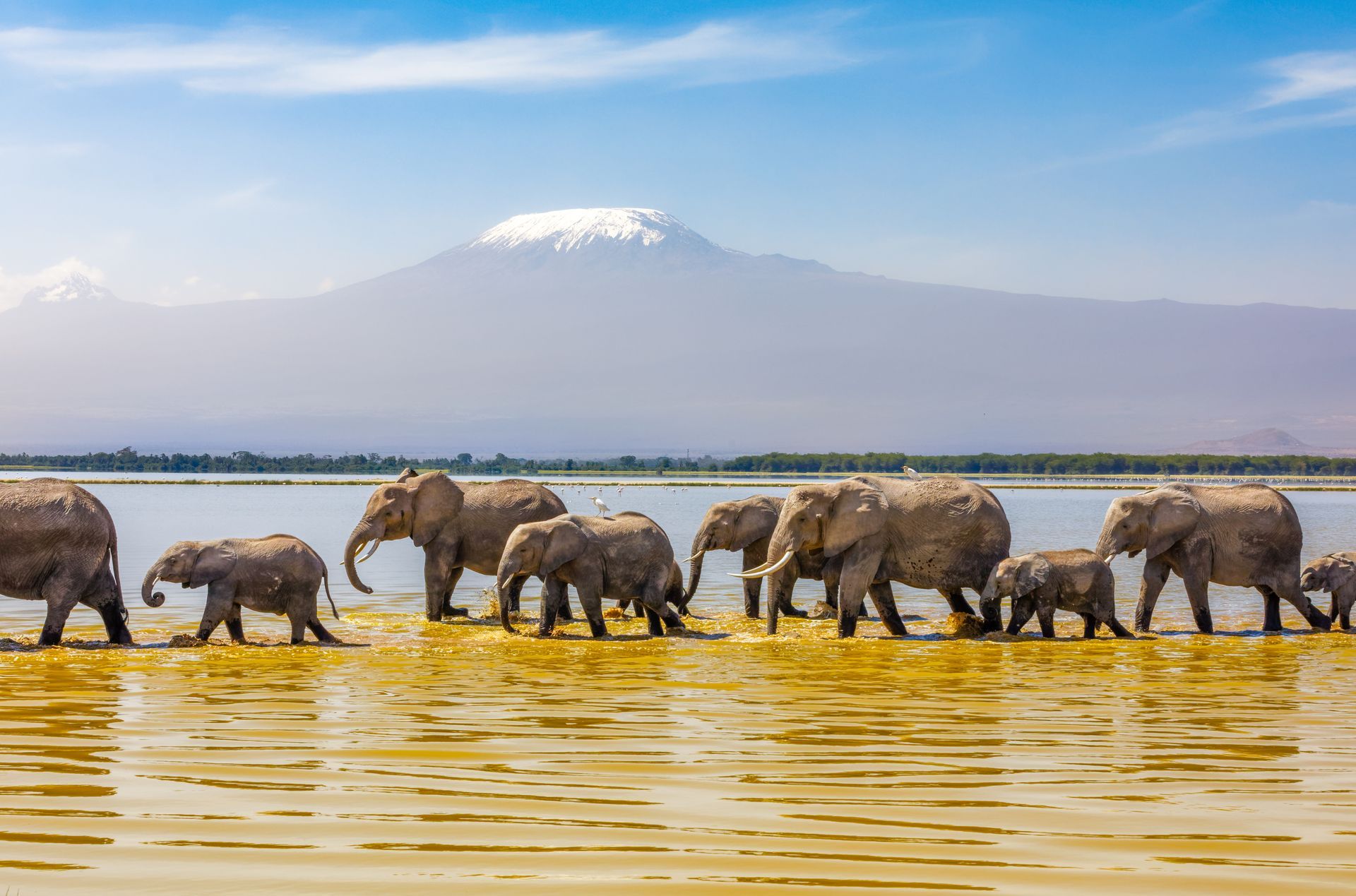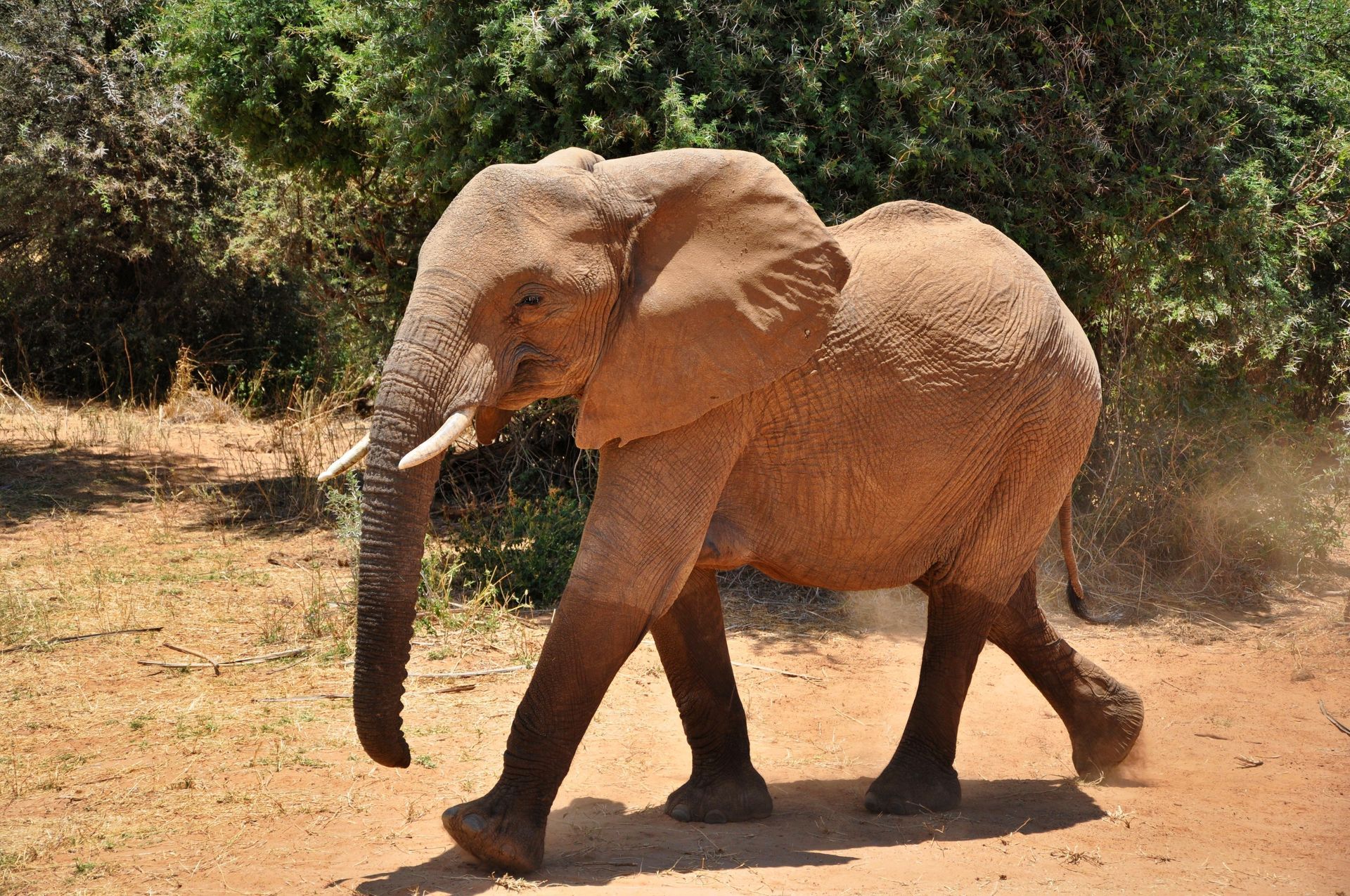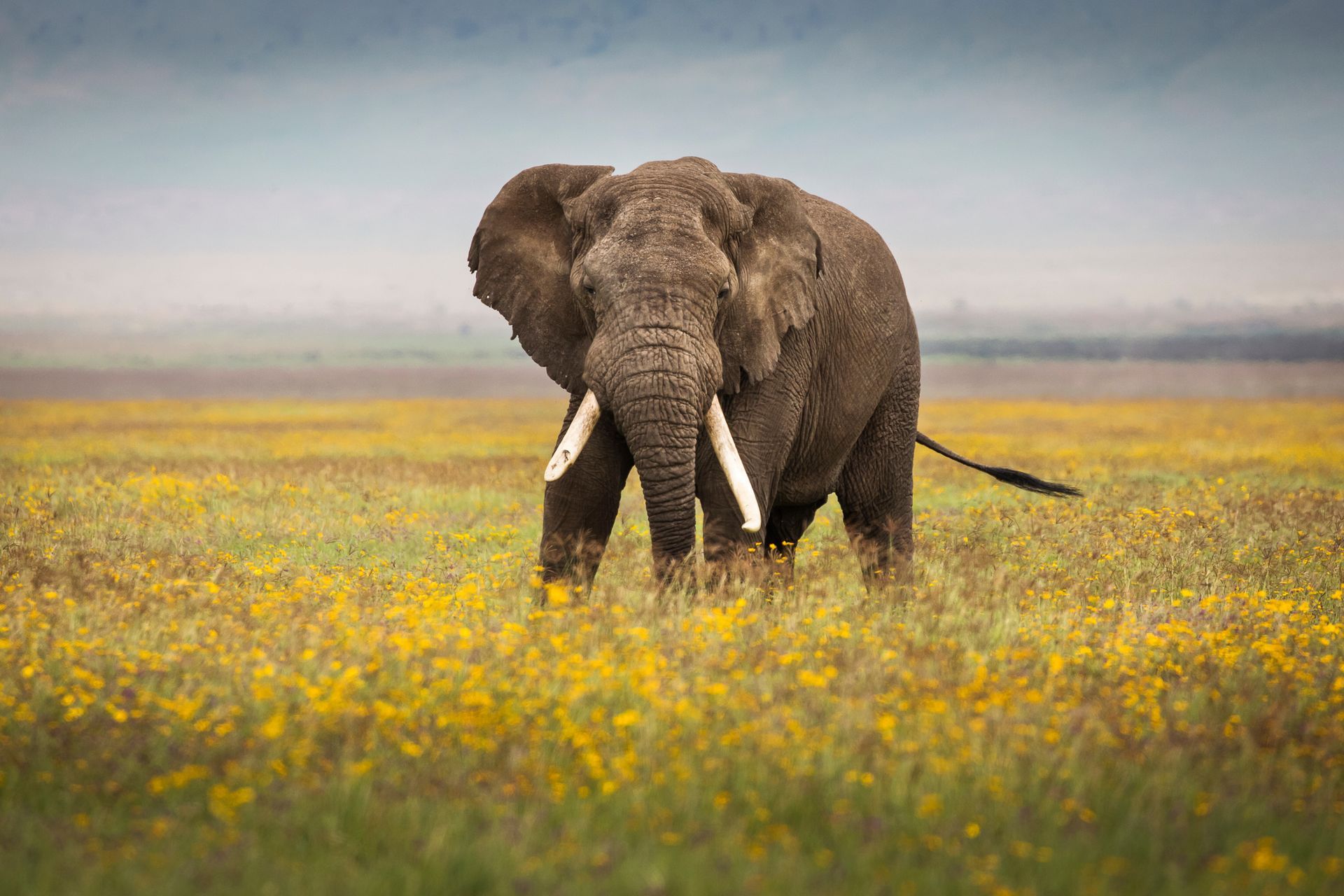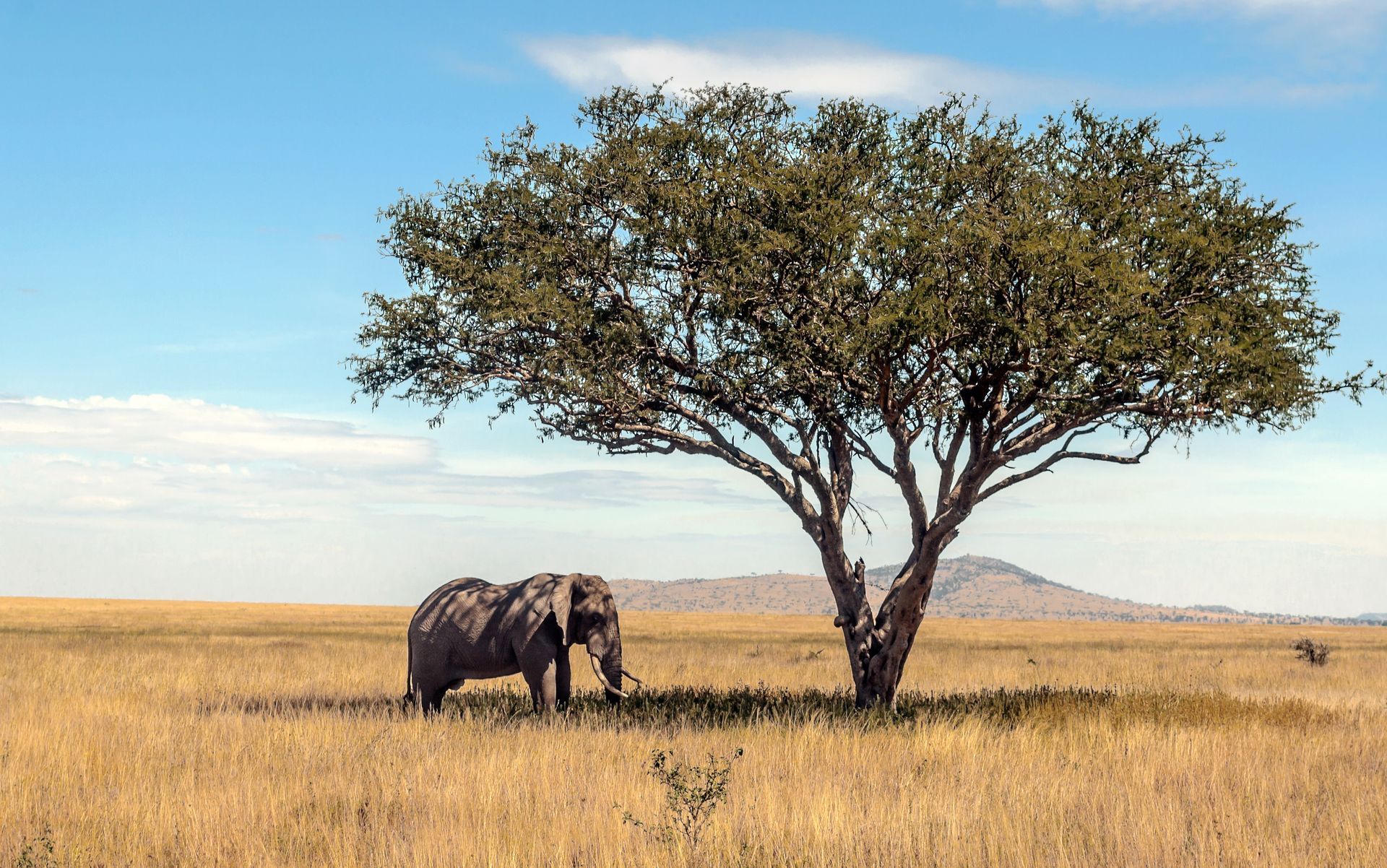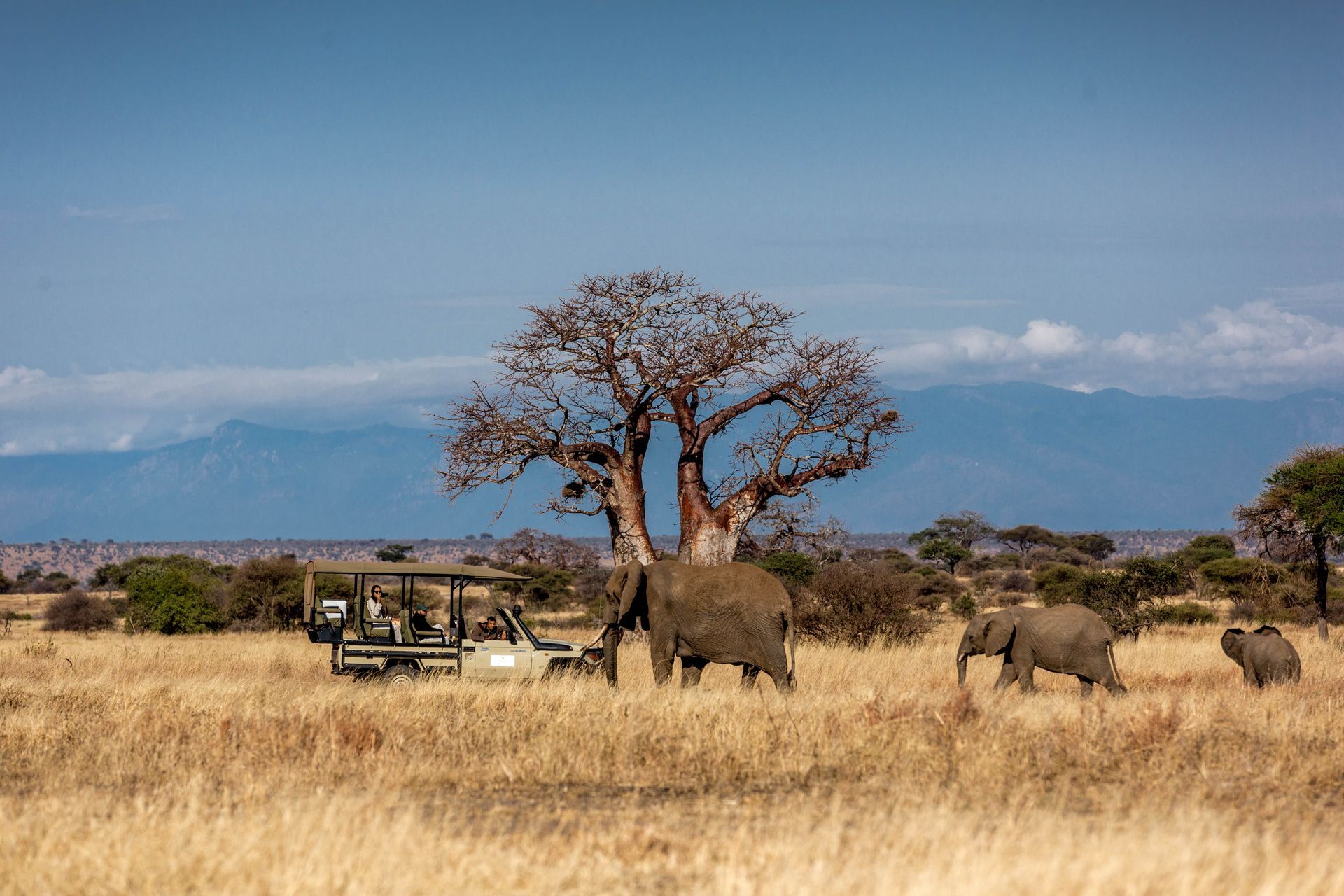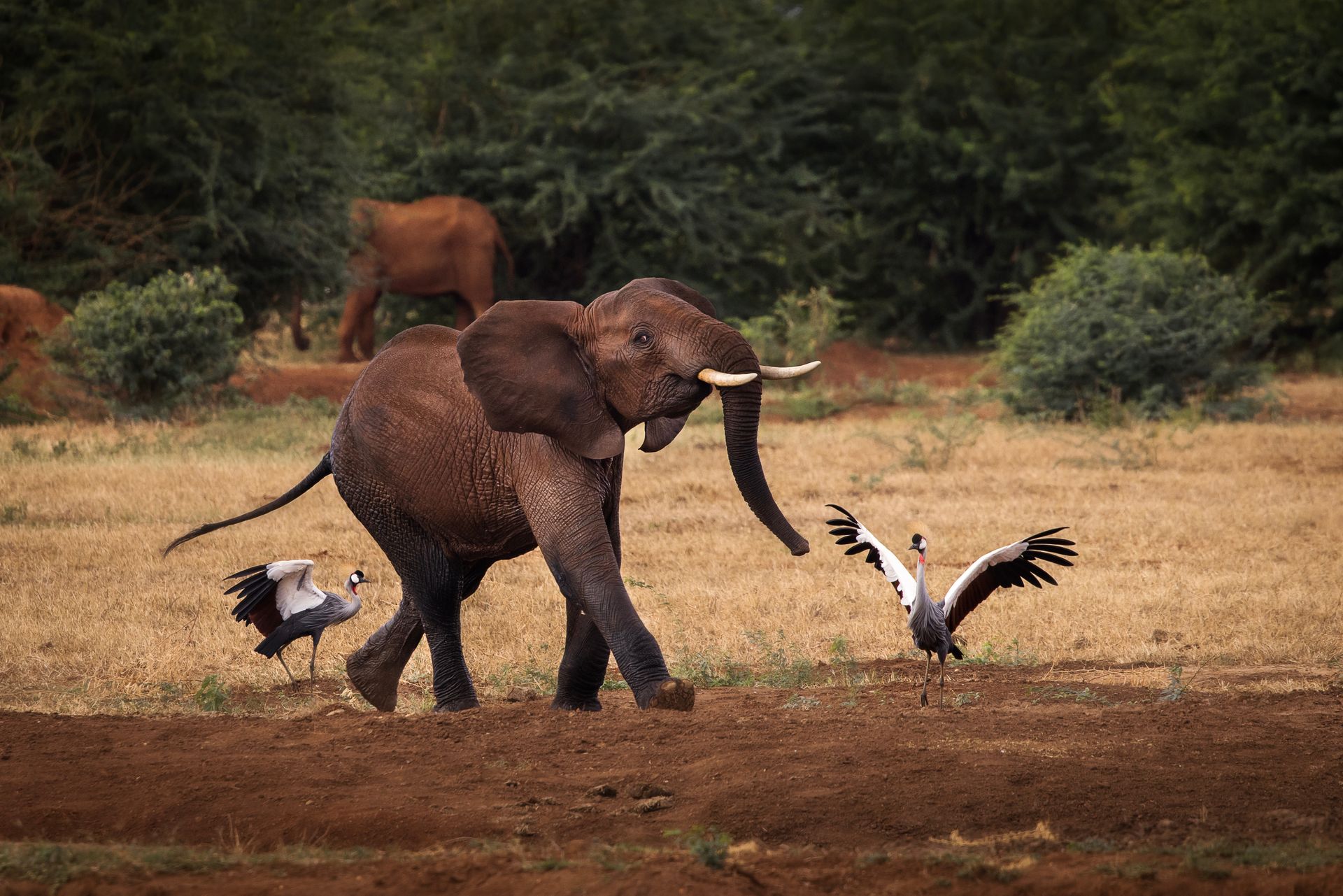THE GREAT ELEPHANT GUIDE
Top tip for the best places to see elephants in East Africa
Kenya and Tanzania, the crown jewels of East Africa, are synonymous with epic landscapes, abundant wildlife, and unforgettable Safari experiences. For those captivated by the majesty of elephants, these two countries offer some of the most exceptional opportunities to witness these gentle giants in their natural habitats. From sprawling national parks to exclusive conservancies, here are the best destinations to see elephants and tip to make the most of your safari adventure.
Amboseli National Park, Kenya
Covering 392 square kilometres, Amboseli is one of Kenya’s most iconic wildlife destinations. The park is dominated by the stunning backdrop of Mount Kilimanjaro, the highest free-standing mountain in the world. Its landscape comprises expansive grasslands, swamps fed by underground springs, and acacia woodlands.
Why visit: Amboseli is often referred to as the “Land of Giants” because of its large population of well-studied elephants, some of which are among the largest tuskers in Africa. The elephants here are used to the presence of safari vehicles, making it possible to observe their natural behaviours at close quarters. The park also hosts a variety of other wildlife, including lions, cheetahs, giraffes, zebras, and over 400 species of birds.
Safari experience: Amboseli offers classic game drives and scenic viewpoints with a chance to see herds of elephants against the dramatic backdrop of Mount Kilimanjaro. The swamps are particularly good spots for wildlife sightings during the dry season.
Photography tip: Early mornings and late afternoons provide the best conditions for capturing the elephants with Kilimanjaro’s snow-capped peak in the background. A telephoto lens (300mm or higher) is essential for wildlife shots.
Samburu National Reserve, Kenya
Located in the semi-arid northern region of Kenya, Samburu National Reserve spans approximately 165 square kilometres. It offers a starkly beautiful landscape with rugged hills, open plains, and the life-giving Ewaso Nyiro River.
Why visit: Samburu is home to a unique subset of wildlife, including Grevy’s zebra, reticulated giraffe, Somali ostrich, Beisa oryx, and gerenuk - collectively known as the “Samburu Special Five.” The reserve’s elephants frequently gather along the river, providing spectacular viewing opportunities.
Safari experience: Samburu offers uncrowded game drives and the chance to see elephants in a dramatic, rugged landscape. The dry terrain contrasts beautifully with the greenery along the riverbanks, where elephants come to drink and bathe.
Photography tip: Position yourself near the river for shots of elephants against the semi-desert landscape. Golden-hour lighting enhances the warm hues of the terrain.
Tsavo National Parks, Kenya
Comprising Tsavo East and Tsavo West, this vast wilderness covers over 22,000 square kilometres, making it one of the largest protected areas in Africa. Tsavo is renowned for its rugged terrain, volcanic hills, and striking red soil.
Why visit: The park is famous for its “red elephants,” whose skin appears crimson after dusting themselves with the iron-rich soil. Tsavo East is known for open plains and the Galana River, while Tsavo West features a more varied landscape with lava flows, rocky outcrops, and the Mzima Springs.
Safari experience: Tsavo offers a raw and wild Safari experience. Wildlife is more dispersed than in other parks, but the sense of wilderness is unparalleled. The parks also host lion, leopard, giraffe, buffalo, and more than 500 bird species.
Photography tip: Capture the vibrant contrast between red-dusted elephants and the bright African sky. A wide-angle lens can frame the vast landscapes, while a telephoto lens helps capture detailed wildlife shots.
Serengeti National Park, Tanzania
The Serengeti, spanning 14,763 square kilometres, is arguably Tanzania’s most famous park. Its vast plains, kopjes, and riverine forests are home to diverse wildlife, including a significant population of elephants.
Why visit: The park is synonymous with the Great Wildebeest Migration, but its resident elephant population is a sight to behold year-round. Elephants are often seen in the park’s northern and western regions, moving in family groups through the woodlands and across the plains.
Safari experience: Game drives in the Serengeti offer an unparalleled opportunity to witness elephants alongside predators and other herbivores. Hot air balloon safaris provide a unique aerial perspective.
Photography tip: Use the park’s iconic kopjes to frame your shots of elephants. The vast plains also lend themselves well to minimalist compositions.
Tarangire National Park, Tanzania
Covering 2,850 square kilometres, Tarangire National Park is renowned for its dense elephant population and ancient baobab trees. During the dry season, the Tarangire River becomes a vital water source, attracting large numbers of wildlife.
Why visit: Tarangire hosts one of the highest concentrations of elephants in Tanzania, with herds sometimes numbering over 300 individuals. The park is also home to iconic wildlife species and a variety of bird species.
Safari experience: The park offers game drives and walking safaris, allowing visitors to experience its landscapes and wildlife up close. The baobab-studded scenery adds to its visual appeal.
Photography tip: Incorporate the iconic baobab trees into your compositions for a distinctive sense of place. Sunrise and sunset provide stunning lighting conditions.
Ngorongoro Conservation Area, Tanzania
The Ngorongoro Conservation Area, a UNESCO World Heritage Site, covers 8,292 square kilometres and includes the world’s largest intact volcanic caldera - the fabled Ngorongoro Crater. Its diverse ecosystems range from highland forests to grasslands and swamps.
Why visit: The lush crater floor supports a dense population of wildlife, including several hundred elephants, black rhinos, and predators. The elephants here are often seen moving through the Lerai Forest.
Safari experience: Descending into the crater is like entering a wildlife wonderland, with opportunities to see elephants alongside the Big Five. The scenery is unparalleled, with a backdrop of forested walls and open plains.
Photography tip: The elevated rim provides excellent vantage points for wide-angle landscape shots. On the crater floor, a telephoto lens helps capture detailed wildlife portraits.
Practical tips for elephant safari enthusiasts
Timing: The dry seasons (June to October) generally offer the best wildlife viewing as elephants congregate around water sources.
Guides: Our expert guides understand elephant behaviour and can position you for the best viewing opportunities.
Conservancies: Consider visiting private conservancies adjacent to national parks. They often offer more exclusive experiences with fewer vehicles and the chance to enjoy activities like walking safaris.
Ethical viewing: We always maintain a respectful distance and avoid any interaction that may disturb the elephants.
Why travel with Leadwood Holidays?
We craft bespoke Safari experiences tailored to your interests. Whether you’re a seasoned wildlife photographer or a first-time safari-goer, we ensure you have exceptional access to East Africa’s remarkable wildlife. Our expert guides and personalised itineraries guarantee a safari that’s as memorable as it is meaningful.

